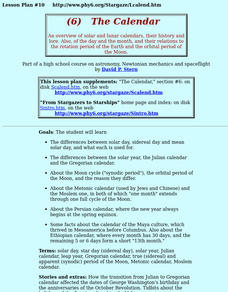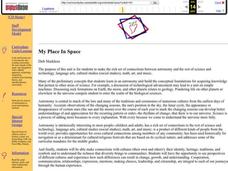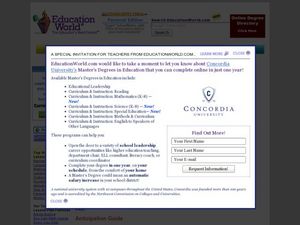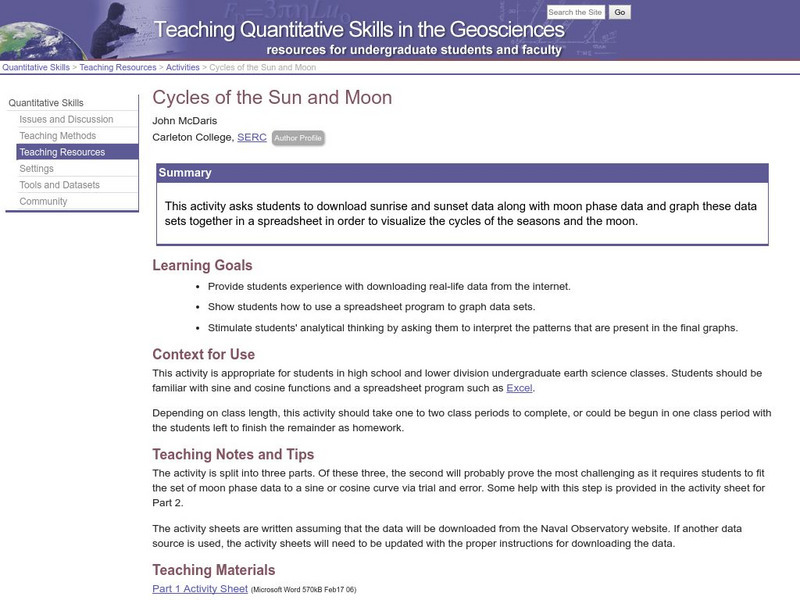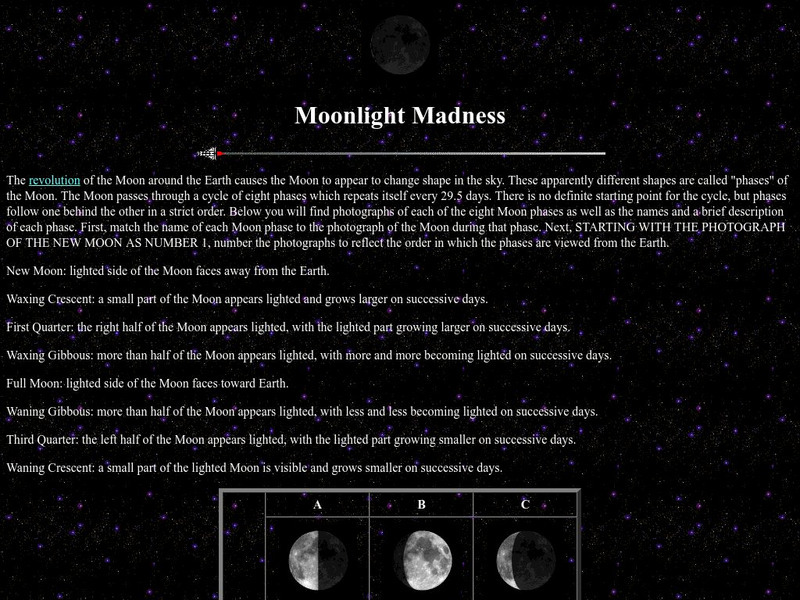Curated OER
The Calendar
Pupils engage in an overview of solar and lunar calendars, their history and lore. Also, of the day and the month, and their relations to the rotation period of the Earth and the orbital period of the Moon.
Curated OER
Leap Year
In this Leap Year reading comprehension worksheet, can learn about the various types of calendars (lunar, solar, etc.) and answer 7 multiple choice questions. Also included is a word search of key terms.
Curated OER
Sampling Rocks
Students investigate rocks. In this earth science instructional activity, students collect rocks from the schoolyard and describe each of the rocks. Students measure and weigh each rock and record the results. Students create a rock...
Curated OER
Rocky Intertidal Field Trip
Students investigate tides and the land submerged under them. In this intertidal field trip, Students visit the intertidal zone and observe the habitats and animals that live there. Students view the pools under rocks where...
Curated OER
My Place In Space
The purpose of this unit is for young scholars to make the rich set of connections between astronomy and the rest of science and technology, language arts, cultural studies (social studies), math, art, and music.
Curated OER
Tide Types
Young scholars record hourly reading for water height for 24 hours and determine whether a location experiences diurnal, semi-diurnal or mixed tides. Links are present for the information. Students predict high and low tide, and answer a...
Curated OER
New Year Celebrations Around the World
Students share their New Year's traditions, then read a news article about how people around the world celebrate the start of a new year. In this current events lesson, the teacher introduces the article with a discussion and vocabulary...
Curated OER
Telling Time Through the Zodiac
Learners compare the Chinese and Western zodiacs, their symbols, their meanings, and their calendars through a in-class discussion and a small group project. This instructional activity includes vocabulary and extensions.
Curated OER
Charting Seasonal Changes
Students research the Earth's patterns of rotation and revolution, create a chart and graph of these patterns and use them to explain the causes of night and day and summer and winter.
Curated OER
The Chinese Zodiac And The Western Zodiac
High schoolers create individual horoscopes that contrast and compare Western and
Chinese views of their futures using poster boards and magic markers. In-class discussion is used to evaluate the use of the Zodiac in different cultures.
Curated OER
Chinese Lantern Festival - Social Studies
Students explore the culture and heritage of their own and other groups. They explain ways communities celebrate New Year's. Students explore how and why individuals and groups pass on and sustain their culture and heritage. Pupils...
Texas Education Agency
Texas Gateway: The Moon Lunar Cycle and Tides
Given models and illustrations, students will identify, demonstrate, and predict the sequence of events in the lunar cycle and relate the position of the moon and sun to their effect on ocean tides.
Georgia Department of Education
Ga Virtual Learning: The Moon
In this interactive tutorial students will explore what it is like on the Moon. Learn why the shape of the Moon seem to change and also about lunar eclipses. Discover why the tide changes twice a day and explore how the cycle of the Moon...
Woodlands Junior School
Woodlands Junior School: The Phases of the Moon
This resource provides information about the lunar phases.
NASA
Nasa Star Child: What Are the Phases of the Moon?
This page provides basic information about the causes of the phases of the Moon. A good diagram shows the lit portion of the Moon as seen from Earth through one complete Lunar cycle.
ArtsNow
Arts Now Learning: Phases of the Moon [Pdf]
In this lesson plan, 4th graders use their bodies to model the day/night cycles of the Sun and Earth. Next, they discuss the moon's role in the solar system and explore the eight phases of the moon by acting out a story. Finally, a song...
Science Education Resource Center at Carleton College
Serc: Cycles of the Sun and Moon
Young scholars download sunrise and sunset data along with moon phase data, and graph these data sets together in a spreadsheet in order to visualize the cycles of the seasons and the moon.
NASA
Nasa Star Child: Moonlight Madness
The revolution of the Moon around the Earth causes the Moon to appear to change shape in the sky. These apparently different shapes are called "phases" of the Moon. The Moon passes through a cycle of eight phases which repeats itself...
NASA
Nasa: From Stargazers to Starships: The Calendar
A lesson plan that gives an overview of solar and lunar calendars, their history and lore. Also, of the day and the month, and their relations to the rotational period of the Earth and the orbital period of the Moon.For versions in...
NASA
Nasa: Eclipses
The periodicity and recurrance of eclipses is governed by the Saros cycle, a period of approximately 6,585.3 days (18 years 11 days 8 hours). It was known to the Chaldeans as a period when lunar eclipses seem to repeat themselves, but...
ClassFlow
Class Flow: Calendar
[Free Registration/Login Required] The history of our calendar is presented through the passage of time with complete cycles of seasons in ancient history providing a starting place. Complete cycles of seasons are discussed and the...


